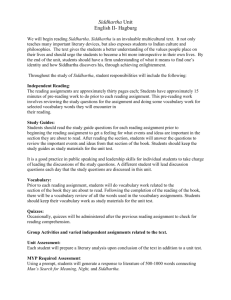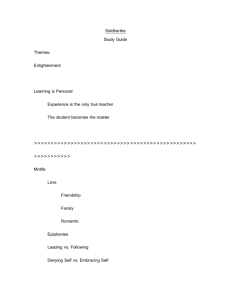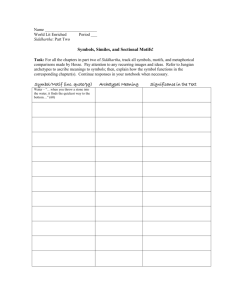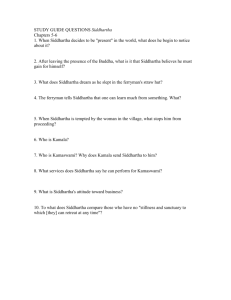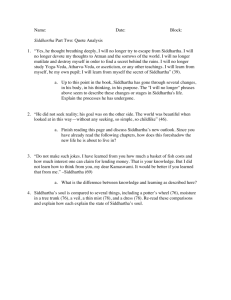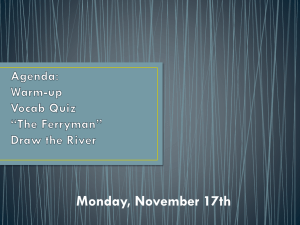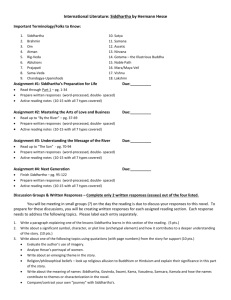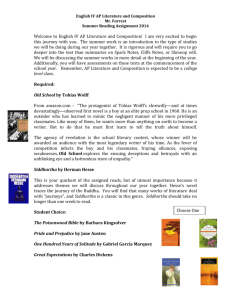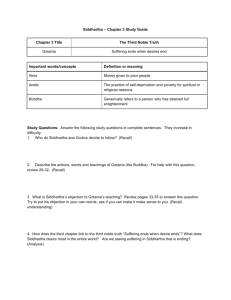Siddhartha: River as metaphor
advertisement
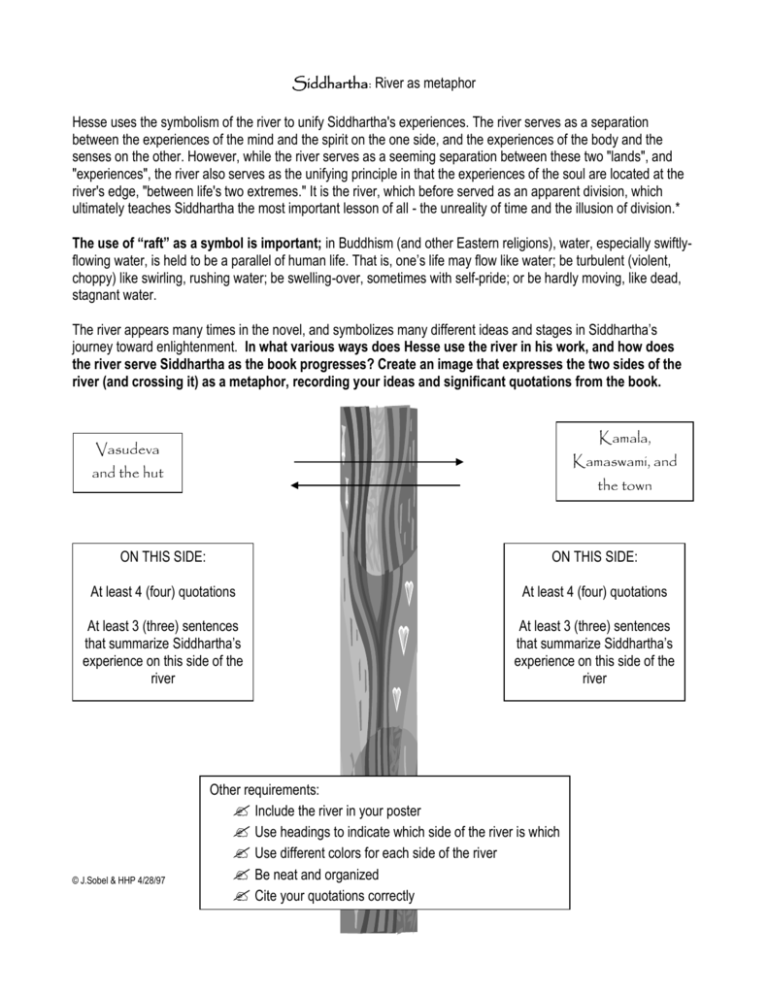
Siddhartha: River as metaphor Hesse uses the symbolism of the river to unify Siddhartha's experiences. The river serves as a separation between the experiences of the mind and the spirit on the one side, and the experiences of the body and the senses on the other. However, while the river serves as a seeming separation between these two "lands", and "experiences", the river also serves as the unifying principle in that the experiences of the soul are located at the river's edge, "between life's two extremes." It is the river, which before served as an apparent division, which ultimately teaches Siddhartha the most important lesson of all - the unreality of time and the illusion of division.* The use of “raft” as a symbol is important; in Buddhism (and other Eastern religions), water, especially swiftlyflowing water, is held to be a parallel of human life. That is, one’s life may flow like water; be turbulent (violent, choppy) like swirling, rushing water; be swelling-over, sometimes with self-pride; or be hardly moving, like dead, stagnant water. The river appears many times in the novel, and symbolizes many different ideas and stages in Siddhartha’s journey toward enlightenment. In what various ways does Hesse use the river in his work, and how does the river serve Siddhartha as the book progresses? Create an image that expresses the two sides of the river (and crossing it) as a metaphor, recording your ideas and significant quotations from the book. Kamala, Vasudeva Kamaswami, and and the hut the town ON THIS SIDE: ON THIS SIDE: At least 4 (four) quotations At least 4 (four) quotations At least 3 (three) sentences that summarize Siddhartha’s experience on this side of the river At least 3 (three) sentences that summarize Siddhartha’s experience on this side of the river © J.Sobel & HHP 4/28/97 Other requirements: Include the river in your poster Use headings to indicate which side of the river is which Use different colors for each side of the river Be neat and organized Cite your quotations correctly
